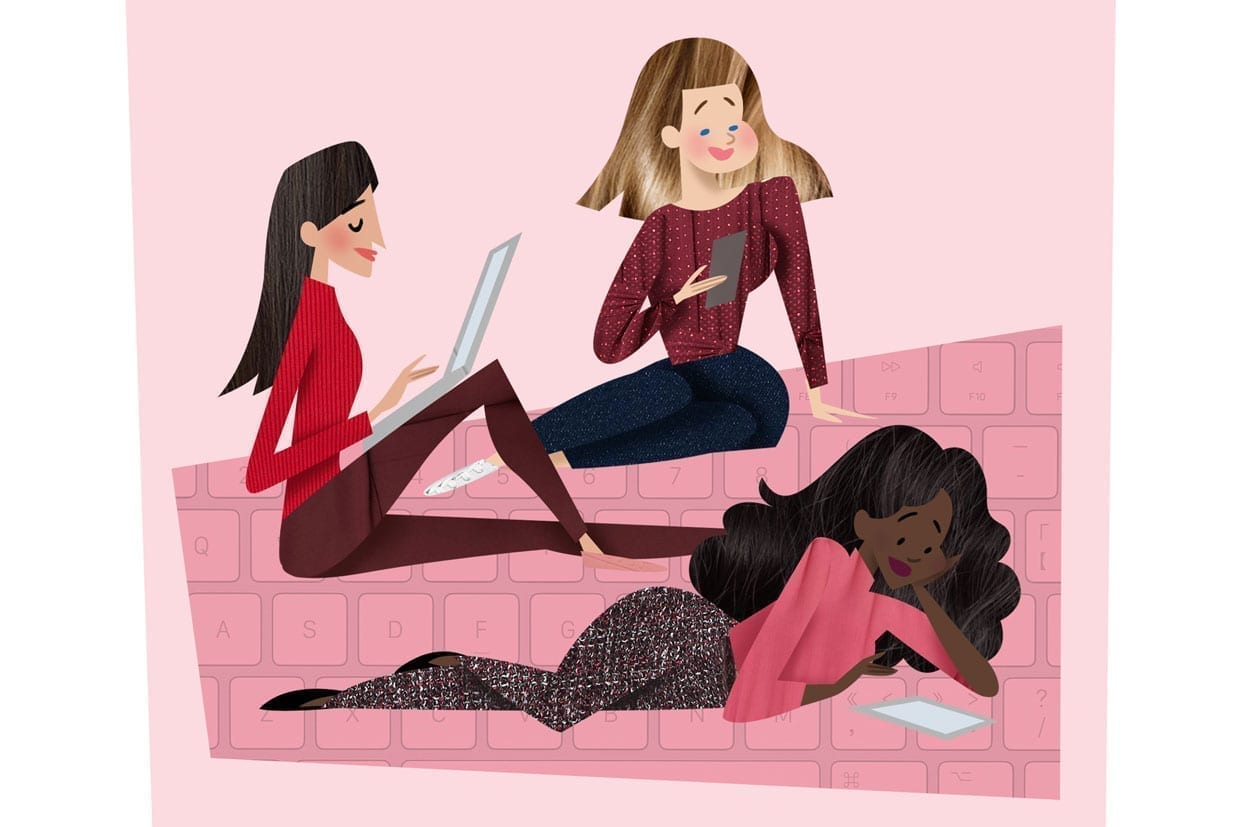Technology: A classic case of can’t live with it, can’t live without it. While it may dramatically improve the efficiency of both our home and work lives, from connecting with friends and family on the other side of the world to running a business on-the-go, our laptops and smartphones are not always the best for our wellbeing. Craning over our devices is giving us what we now refer to as “tech neck,” an umbrella term for neck related issues as a result of spending too much time screen-gazing.
“In the immediate, we’ll see patients suffering from neck, shoulder and back pain and sometimes even headaches. Down the line patients present kyphotically (with an abnormally rounded and hunched spine) and ongoing chronic neck and back issues,” says Rob Foyster, lead physiotherapist at Ten Health and Fitness.

While the physical effects of the online world are well-publicized, the impact of these devices on our skin is less so. Leaning over your devices for extended periods can in fact cause aesthetic issues, too. “The neck skin can be much thinner than the skin on our face. As there aren’t the same supporting fat and bony structures in the neck it is more likely to sag and wrinkle with age,” says Dr. David Jack, a London-based premier aesthetic doctor. Constantly checking your email can cause these fine lines to be exaggerated.
Furthermore, these devices emit blue light, also known as high-energy visible light (HEV), which can damage the skin in a similar way to the sun’s UVA and UVB rays. Blue light actually penetrates deeper than UV increasing the possibility of premature aging.
But there are steps you can take to counteract the negative impact of tech neck. First and foremost, Foyster highlights the importance of improving your ergonomic setup while using a desktop computer, laptop, tablet or phone. “Computer and phone stands are incredibly helpful,” he says. “Or if you are on the move, think about lifting the phone screen up to your eye height rather than craning your neck down at the screen.”
In terms of spinal damage, Foyster also suggests posture improving exercise classes like Pilates, in particular, Dynamic Reformer Pilates. “This is fantastic to help bridge the gap between our ever-increasing sedentary lifestyle and rising rates of postural-related illness,” Foyster says. “You focus on specific and isolated movements to increase strength and mobility. This, in turn, will help you to improve your posture and move better,” he added. If you are short on time, exercises at your office desk or on-the-go can provide temporary relief and prevent longer-term damage too. Foyster advises stretching out the neck by tucking the chin in and out for fifteen times, or, try slowly dropping one ear at a time to the nearest shoulder and repeat for thirty-second intervals.
From a skincare perspective, make sure you are not neglecting your neck when carrying out your morning and evening routines. “We should give attention to the neck the same as we would to the face. Often we forget about the neck and décolletage, and it shows hidden signs of aging, perhaps even more than the face,” says Dr. Margaret Grabicka, who practices general and aesthetic medicine. “Make sure to cleanse, exfoliate, tone and hydrate your neck the same way you would your face. Plus ensure to incorporate tech neck fighting ingredients like hyaluronic acid, vitamin A and vitamin C.”

As always, the best form of prevention comes via SPF. This is especially important in the neck area not only due to environmental factors (i.e. the sun’s rays) but because it is a hot spot for the aforementioned blue rays. Make sure to wear an SPF 30+ every day of the year.
In the meantime, if you feel like your smartphone or laptop use is getting out of control, there are a few measures you can put in place. Try banning devices in the bedroom, implementing a technology curfew, turning off notifications, filling your diary with phone-free activities or if all else fails, guilt-trip yourself with an app like Moment which tracks your tech usage. While so much of our work and life is at a click of the button, finding time away from those screens is key — for your health, skin and sanity.







